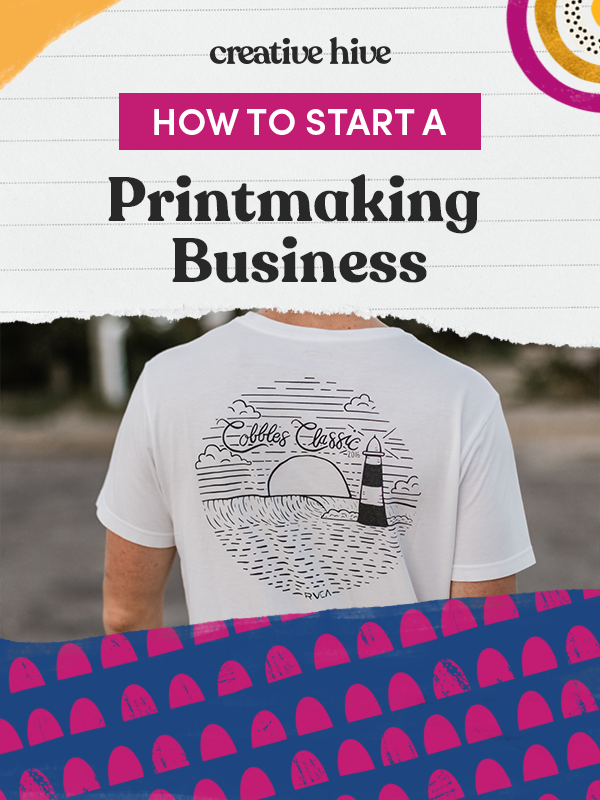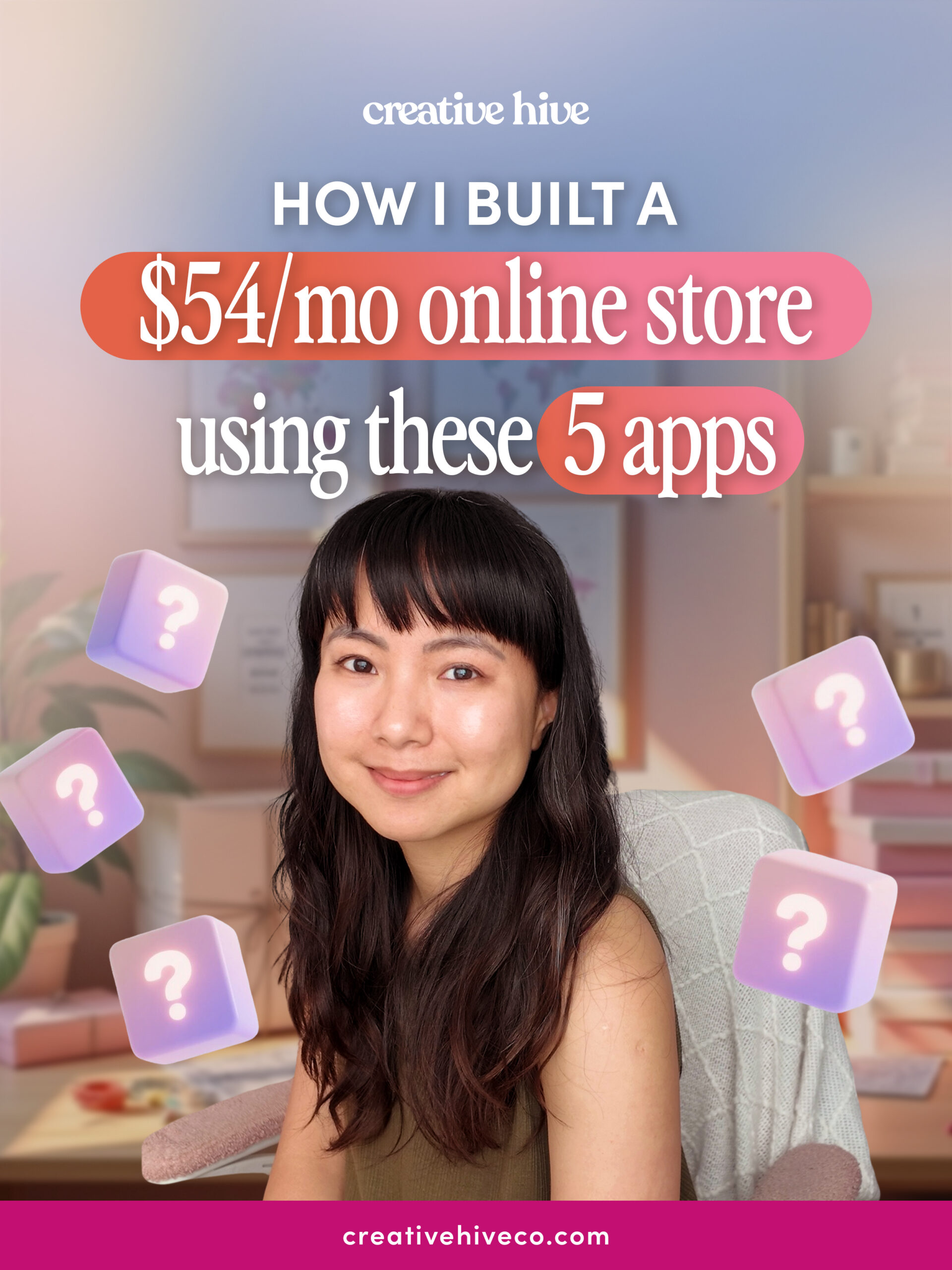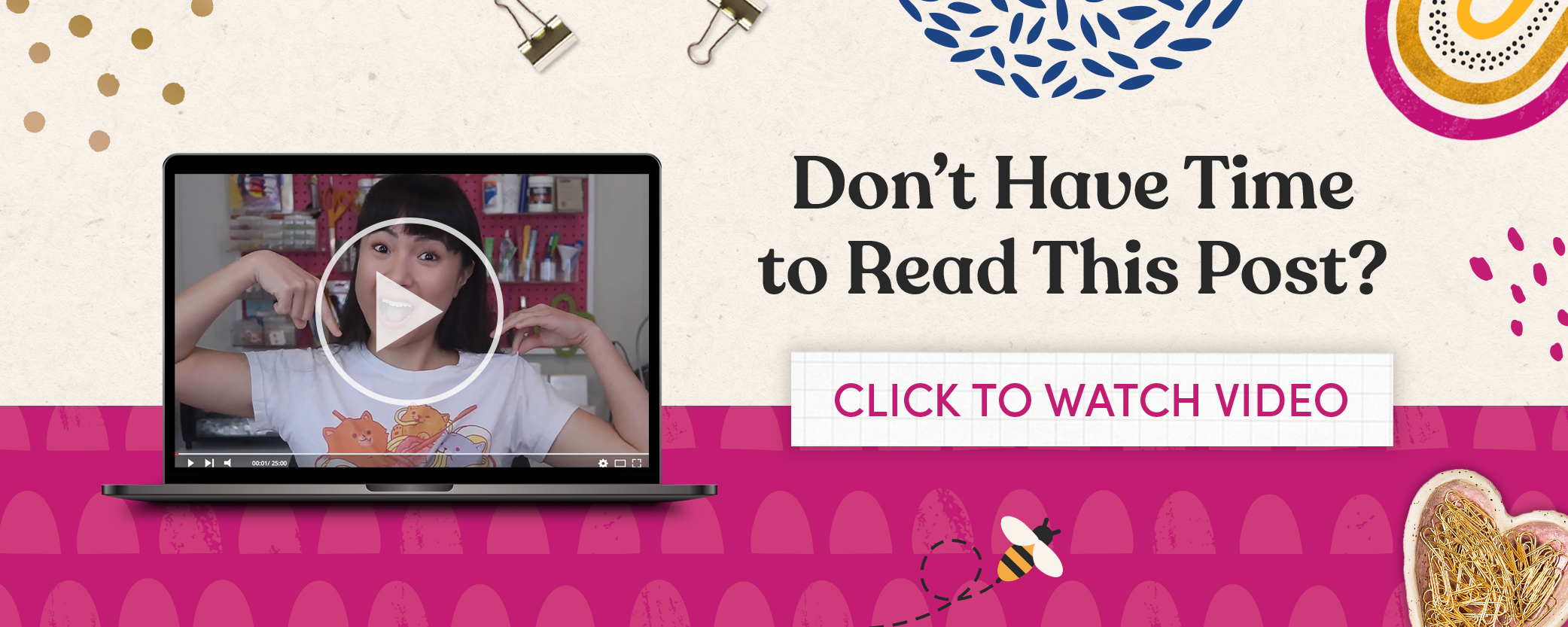I want to help you build a sustainable, profitable handmade business that makes you consistent income and sales. I only ever teach or recommend marketing, social media, pricing, production and branding tips that I’ve personally used successfully in my own 7-figure handmade businesses.
I'm Mei, from Los Angeles!
Read More
Popular Posts You'll Love
Looking for something?
Categories
starting a business
get more traffic
running a business
make more sales
branding
growing a business
mindset & productivity
podcasts
pricing & money
product photography
reviews
selling on etsy
selling on amazon
social media
selling wholesale
- Facebook0
- Twitter0
- Pinterest3
- 3shares
Who doesn’t love a unique t-shirt featuring a cool printed design?!
Whether it’s our favorite band, an inside-joke, or a business logo, screen printed t-shirts make a statement about who we are.
It’s super fun to wear these shirts – but it’s even more fun to make them.
If you’ve got great designs, why not put them on a t-shirt?
Today, I’m going to tell you how you can turn your printmaking hobby or dream into a profitable business.
With the right design and business model, your shirts could be flying off the shelves in no time.
The best part, you don’t have to limit your printmaking business to t-shirts.
The options are endless:
- pants
- hoodies
- hats
- tapestries
- stationary
- posters
If you can print on it, you can make it.
Screen printing is super popular and it’s sometimes referred to as silk screening.
It’s the method of laying thick ink on top of the t-shirt, rather than soaking it, to print a design.
Screen printing is actually an 8 billion dollar industry, so there’s absolutely customer demand.
That said, the pandemic has actually hurt the screen printing industry.
Its overall growth has gone down 2.2% since 2015, with the largest drop occurring during the pandemic, according to IBIS World.
I still believe this decline doesn’t reflect a lack of interest in screen printed products.
It’s simply due to a decrease in consumer spending on clothing in general thanks to the pandemic, since no one was going out.
It’s possible that now that the world is opening up again, the industry will spike back up, too.
Another method of printing is digital printing.
Digital printing is far less labor intensive than screen printing and produces high quality prints at a faster pace.
It’s another popular choice among printers – especially those that need to meet a high demand of customers.
The digital printing industry is worth $11 billion, 3 billion more than screen printing.
The efficiency and convenience of digital printing are likely why this industry is performing better than screen printing, overall.
Regardless of which printing method you use, you’ll be able to find a customer base for your products.
The decline in the industries is due to the pandemic more than anything else.
So as the world starts to heal, they’ll likely be more willing to spend some extra cash on a cool custom gift for themselves or others.
If you want to go into this business, don’t let the decline stop you from trying.
Now that you know a little more about the industry, let’s get into the steps you need to take to build a successful printmaking business.
AKA – the exciting part!!
Picking Your Designs
The first step is to figure out what exactly you’ll be printing.
Not just whether you want to print shirts or posters – but the actual theme of your shop.
In fact, I’d recommend NOT containing yourself to one type of product, but keeping it open so that you can sell multiple types of products.
That way, you’re giving people a variety of reasons to shop from you, whether that’s a piece of art to decorate their home with or a shirt to buy as a gift.
You might also find that some of your customers love your designs, but don’t necessarily want to wear them on a t-shirt.
If you don’t have other options available – like stationary, posters, or frameable prints, you might lose out on potential customers.
So, while it’s important to think about what type of product you’ll be printing on, choosing a theme and being consistent with that for your designs is top priority.
Maybe you can print designs that reflect your city.
This can be a fun niche for your local market – but it might make it hard to expand to a wider market.
What about nostalgic prints inspired by your old favorite TV shows?
I know TV references can be a super popular, unique gift, and everyone loves a little nostalgia.
Or, you could print entirely custom designs for your customers, in your own style of art.
I’ve seen shops that take family photographs and turn them into pop-art style prints.
If you’re stuck, try working backwards.
Pick an audience or niche first, and then brainstorm what designs you can make for those people.
Try not to choose a totally oversaturated niche that will be hard to stand out in.
But you also don’t want to choose a niche that nobody’s ever heard of because then customers just won’t be able to find you.
At the end of the day, you want to try to find that perfect sweet spot.
Custom stationary, for example, is a smaller market on Etsy – that still has a large existing customer base.
Once you know what niche you want to fall into, you can decide what products you want to print.
You might choose based on cost of supplies, but you can also decide based on what you think your design will work best with.
Not everything that looks good on stationary works on a baseball cap.
Does your work scream “wear me!” to customers, or “hang me on a wall!”
Sometimes, it will work perfectly well for both.
A Los Angeles poster is just as interesting as a Los Angeles shirt.
Like I said before, the more products you have, the better for your store, as long as they’re consistent in theme.
Picking Your Printing Style
Step two is choosing what type of printing you’ll do.
Namely, whether you want to try screen printing or digital printing.
We already covered some of the basics of both.
But let’s dive a little deeper so you can make a well-informed decision about which method works better for you and your shop.
Screen Printing
Screen printing is far more labor intensive than digital printing – and there’s a lot more room for error.
That said, when done right, this method is unique, interesting, and makes great prints.
Many artists pride themselves on their screen printing skills, because it really is impressive once you learn how to master it.
That still doesn’t mean it’s for everyone.
Disclaimer, the following explanation is a slightly simplified version for the sake of making this post an easy read.
I’m focusing on the big steps here.
The first step to screen printing (after choosing your design) is preparing the screen.
These screens look a lot like window screens, but they’re surrounded by a wooden frame, and are better quality.
You’ll cover the screen in a layer of emulsion to prevent ink from leaking through.
Then, you’ll start mixing your colored ink until you make the exact colors you’re looking for.
After that, you’ll place the screen and the shirt into a specialized printing press.
There, you’ll pour the color mixture, using the screen to soak up any excess ink.
You’ll repeat this process for every new color – so most screen printers limit the number of colors in their design to just one or two.
After the colors are placed, you put the shirt into a specialized dryer.
Then, as long as everything looks okay, it’s ready to go!
Screen printing is obviously a lengthy process – and it’s limiting when it comes to the amount of colors you use and the complexity of the design.
You can use unlimited colors, but it’ll make the work a lot harder and longer to complete.
If you use high quality ink, you can create some incredibly cool shirts that last a long time!
Not only that – but the colors tend to be more vivid and brighter than digitally printed designs.
Digital Printing
Digital printing is a much easier and faster process.
It’s a much newer method at only about fifteen years old – but its popularity has boomed since its invention.
It is on the expensive side – with the machine costs STARTING at $15,000 and going up from there.
Some cost as much as $800,000.
But many print makers can make up this cost relatively quickly – because they can churn out so much product so quickly.
Digital printers use Direct to Garment printers – which are basically giant inkjet printers meant to print out t-shirts and other clothing items.
The printers make it easier to blend a variety of colors, even though they don’t turn out as vibrant as they would with screen printing.
Digital printing is an expensive, but efficient process – and more and more shops are using it in order to meet high demand.
At the end of the day, saving time is a big deal when you’re operating a business.
So if you can afford it and you have dreams to build a big business, I’d recommend digital printing as a good place to start, or maybe to aspire to get to eventually.
Gathering Your Supplies
Once you know which printmaking method is the best for you, you can start step three: gathering supplies!
The supplies you choose will vary depending on which method of printing you choose and what products you want to print on.
I’ll do a basic breakdown with both types of printing methods.
This should give you a pretty good idea of the startup cost.
Screen Printing Supplies
For screen printing, the first item you’ll need is a screen printing press.
If you’re new to the business, you can start with a manual machine.
It’s a little more labor intensive, but it’s a great way to master the craft, and you can upgrade the machine as your business grows.
Manual machines cost around a few hundred dollars to $5,000 depending on how many colors you want to be able to do at once.
And they can make about 60 prints an hour!
A starting cost for automatic machines is about $30,000 – so I highly recommend starting with a manual machine until you get your business off the ground.
Next, you’ll need to buy screen printing ink.
Speedball ink is the most popular brand for artists, and a set of multiple colors is $28.99 on Amazon.
You’ll then need Squeegees, which are what you’ll use to pull the ink across the screen.
Squeegees are around $10 on Amazon.
After that, you’ll need emulsion – the liquid you use to keep ink from spilling out of the screen.
Emulsion is around $20-$30 depending on the size and brand.
Then you’ll need design software.
You can make elaborate t-shirt designs on Adobe Illustrator for $19.99 a month.
But there are other softwares like Coreldraw that are free to use, as of the time of this post.
Next, you’ll need an exposure unit to expose your stencils to UV light.
This gets your designs onto the screens.
Exposure units can range dramatically in price – but depending on the quality you choose, you can expect to spend somewhere between $500 and $2000.
Then you’ll need the actual framed screens, these cost around $10-$20.
After that, you’ll need a washout booth to clean your screens.
These can cost between $1000 to $2000 to buy, or you can build your own.
Finally, most screen printing shops use flash dryers to cure the inks and make them wash resistant.
Flash dryers cost between $400 and $2000.
Digital Printing Supplies
For digital printing, you’ll need the same design software as screen printing, plus a direct to garment printer.
These printers start at around $15,000 and can get up to $800,000.
I know, pretty crazy!
You’ll also need a heat press – which costs around $300 for a basic level press, but can get up to $3000.
The supplies needed for digital printing are far fewer – but they are extremely expensive.
You can add the cost of supplies for digital printing versus screen printing and decide what works best for you.
One perk about digital printing is that you can make much more product.
So if your business is successful, you should be able to make up for those expensive costs faster than you might with screen printing.
Making Your Product
Step four of starting your own print making business is making the product!
A good rule of thumb is to start with about 10-15 pieces of each product.
Then, you’ll have a good idea of which products are selling the most, and you can make more of that product as needed.
Make sure to take plenty of time to practice and perfect your craft before you make those sellable pieces.
Especially if you plan on screen printing, which is a lengthy process that will take time and patience to master.
After you make your product, you can move onto step 5 – starting the actual shop!
Starting Your Shop
As usual, I recommend building a shop on Shopify.
That way, you’ll remain in control of your own shop and don’t have to share a portion of your sales with a parent site like Etsy or Amazon.
On Etsy or Amazon, you really are at the mercy of those sites and are confined by the rules and guidelines, as well as the competition.
You can always have Amazon or Etsy as a side business, but try to have the majority of your traffic go to your Shopify site.
You’ll be glad to have so much freedom and control over your own business.
Plus Shopify is super customer-friendly, which is always a plus because that means making sales is easier for you.
Once your account is all set up, you can start selling your prints!
Are you interested in starting a print making business?
Would you prefer screen printing or digital printing? Or maybe you’ve already got a print business.
I’d love to hear more about it!
Let me know in the comments below!
Also don’t forget to check out my YouTube Channel for more great handmade business tips and tricks!

Leave a Comment
Liked this article? Share it!
Unlock a Profitable Handmade Business
in Just 12 Weeks Without Using Etsy
or Social Media
FREE WORKSHOP
This workshop is for anyone who makes and sells a handmade or physical product, including jewelry designers, artists, paper designers, bath & body product makers and more!
What You'll Discover
The #1 mistake people make with Etsy & social media that causes shops to FLOP
The secret to making it with your handmade shop so it's no longer just a hobby
How to make sales in your handmade shop with ease so you can finally get to 6-figures
TAKE ME THERE
Your email address will not be published. Required fields are marked *
Leave a Reply Cancel reply
About
Blog
A Sale A Day
Student Login
Free Class
Contact
Terms
Become A Student
Watch On YouTube
Student Reviews
See My Handmade Shop!




Hello Mei,
Can you comment on digital printing services such as Spoonflower? How applicable are they to starting one’s own business?
Many people have said they want to play this unique game. You and your friends can have a lot of fun with scribble io because it is a unique game with a creative atmosphere.
Unique t-shirts are a fantastic way to express individuality, whether through band logos or personal designs. Creating these shirts can be a fun hobby and a profitable business. With screen printing, the possibilities are endless—think hoodies and hats too! Just like in the Slope, where you navigate challenges, you can overcome industry setbacks and thrive as consumer interest grows again.